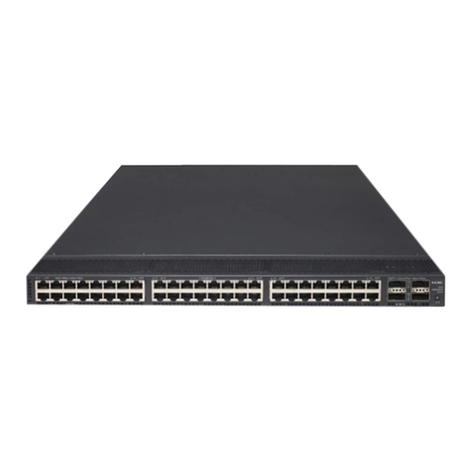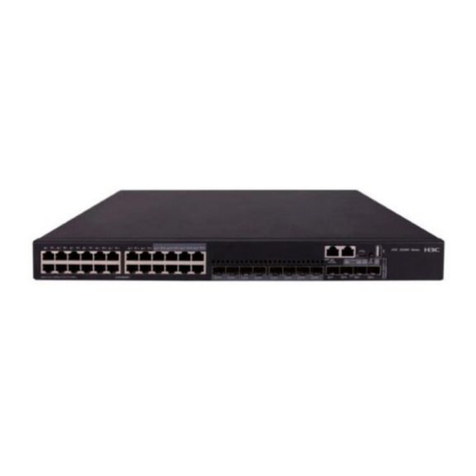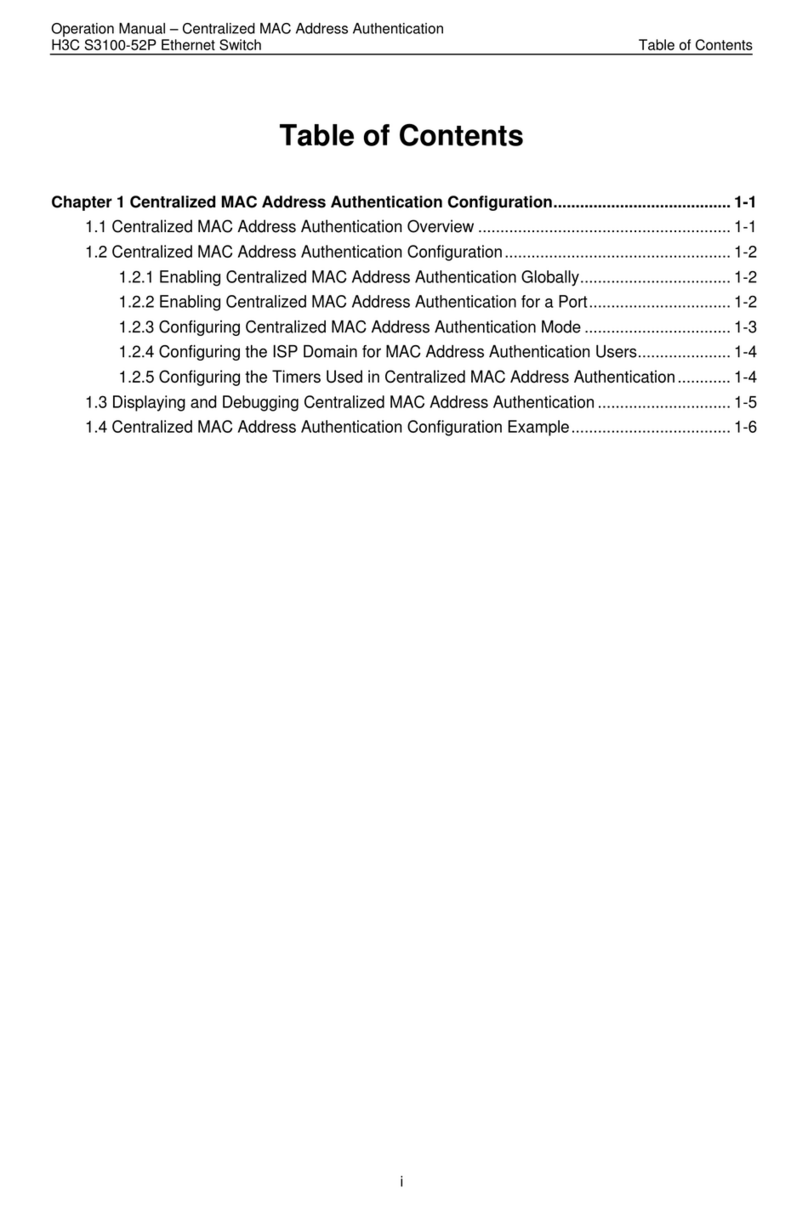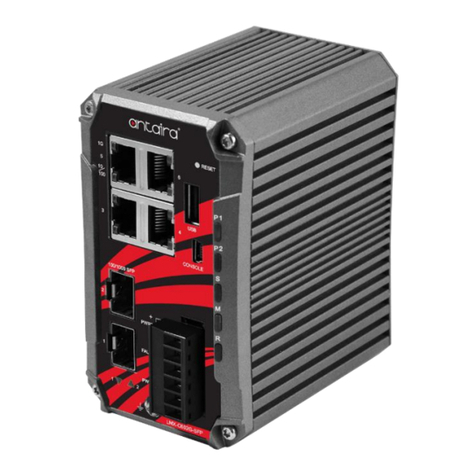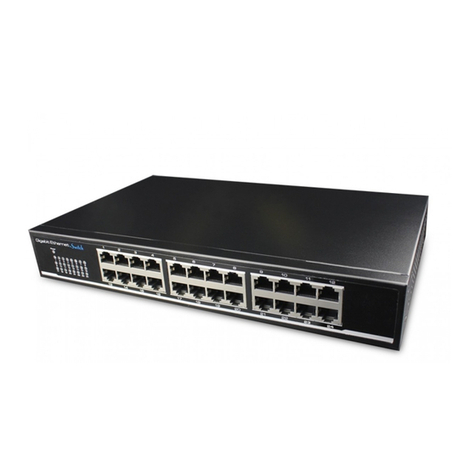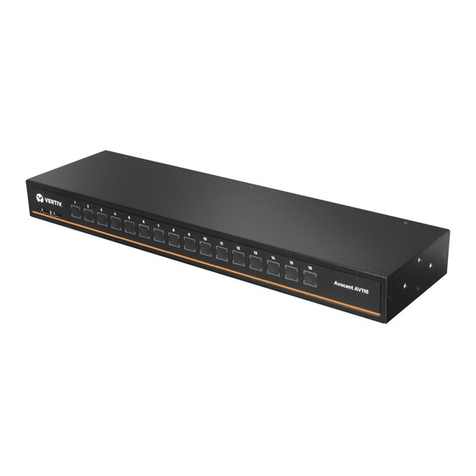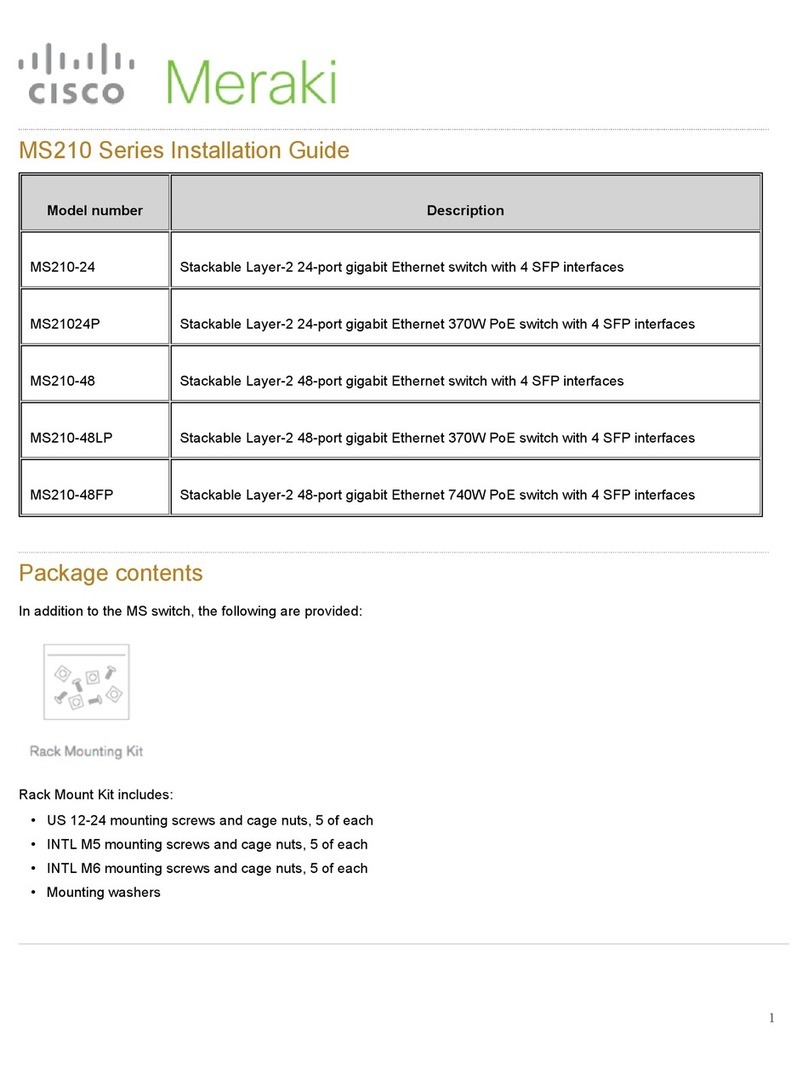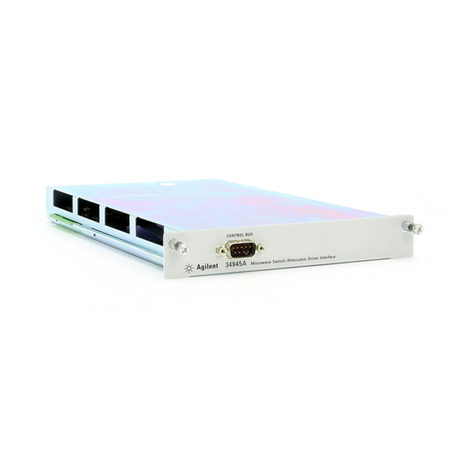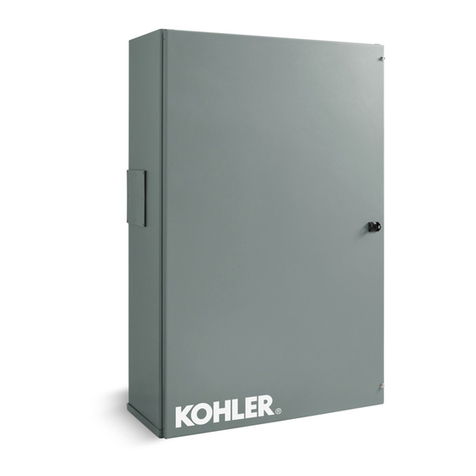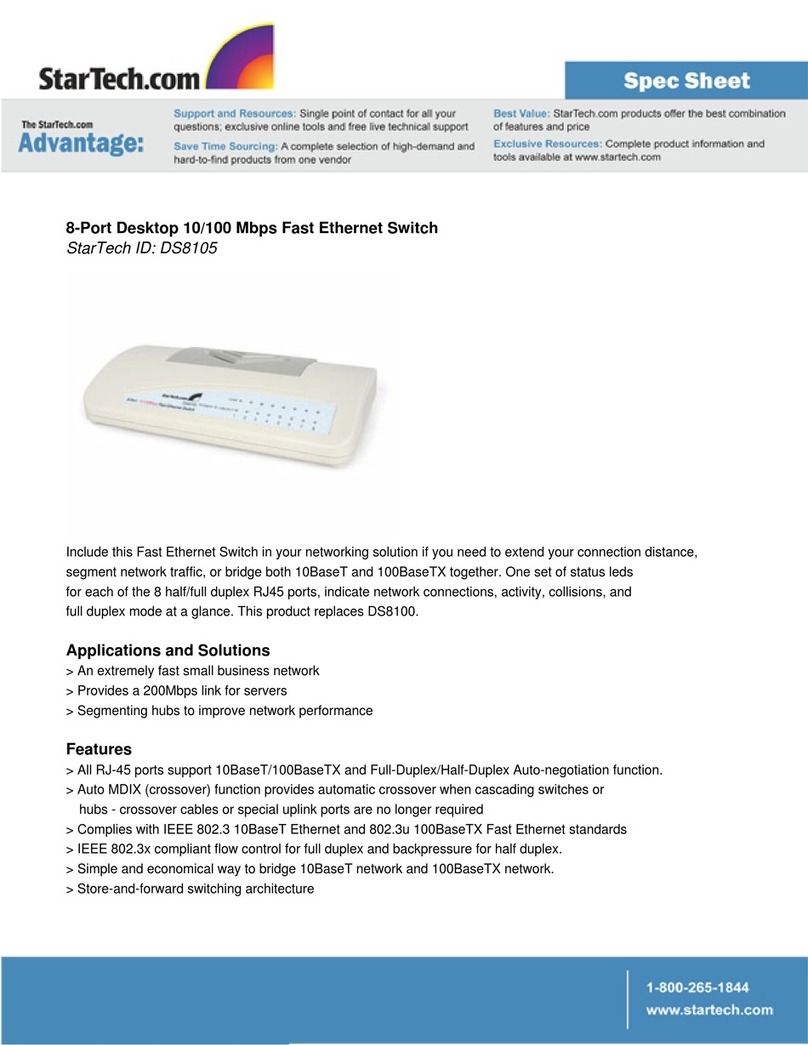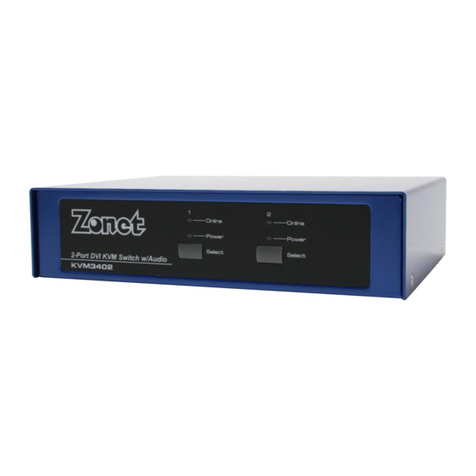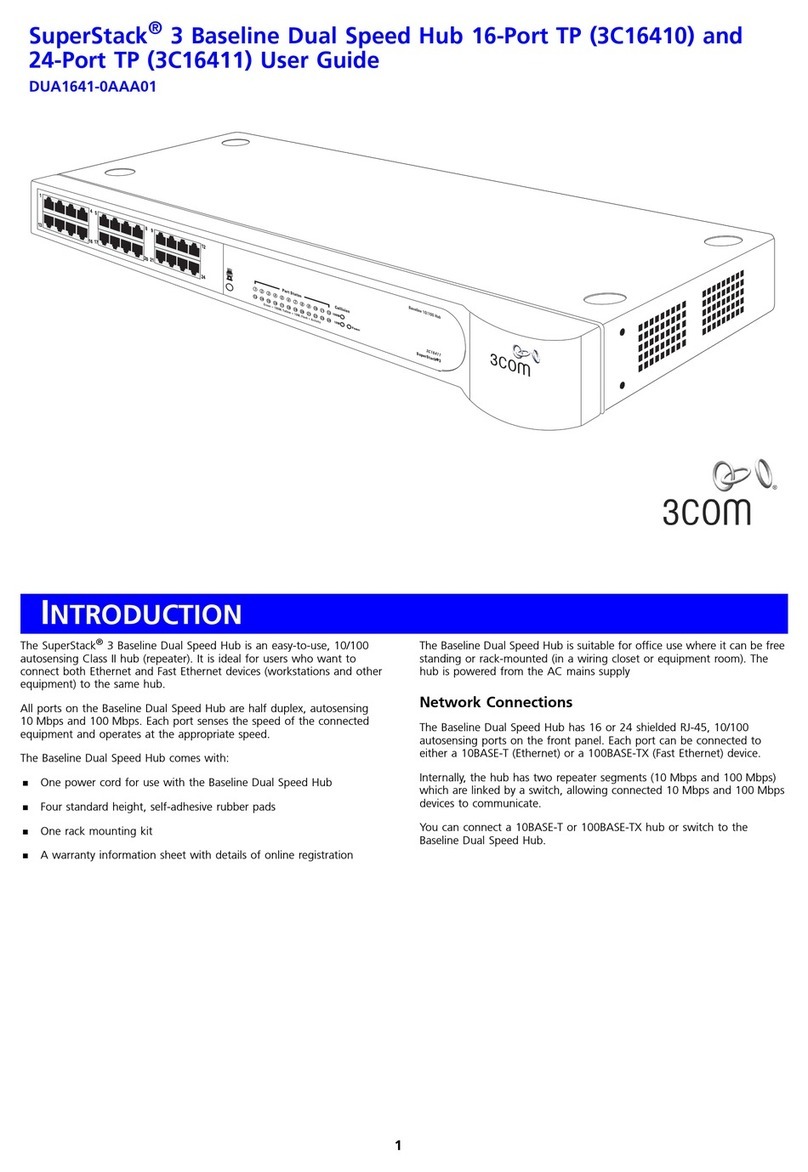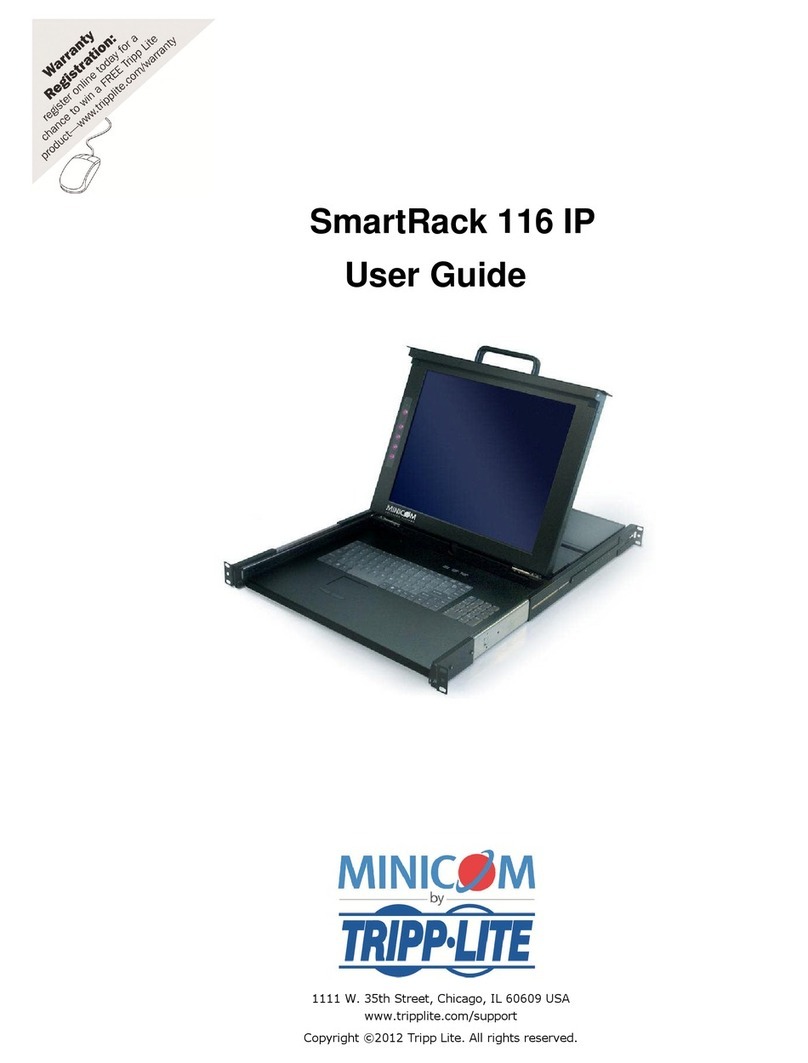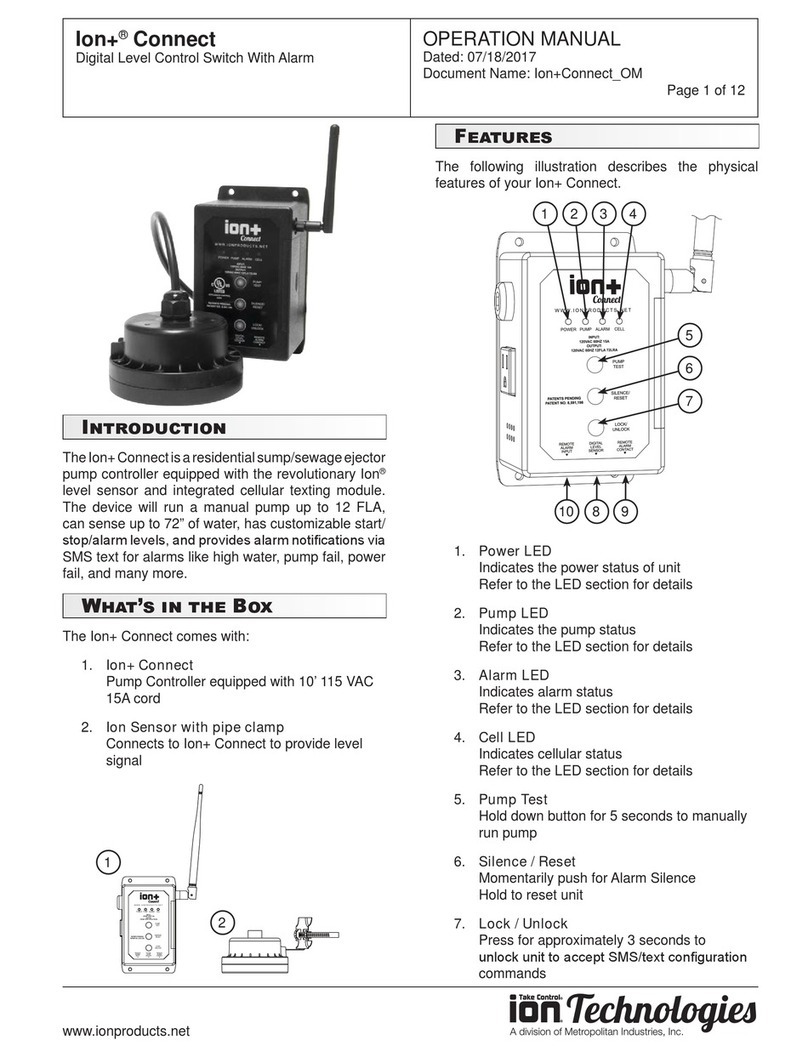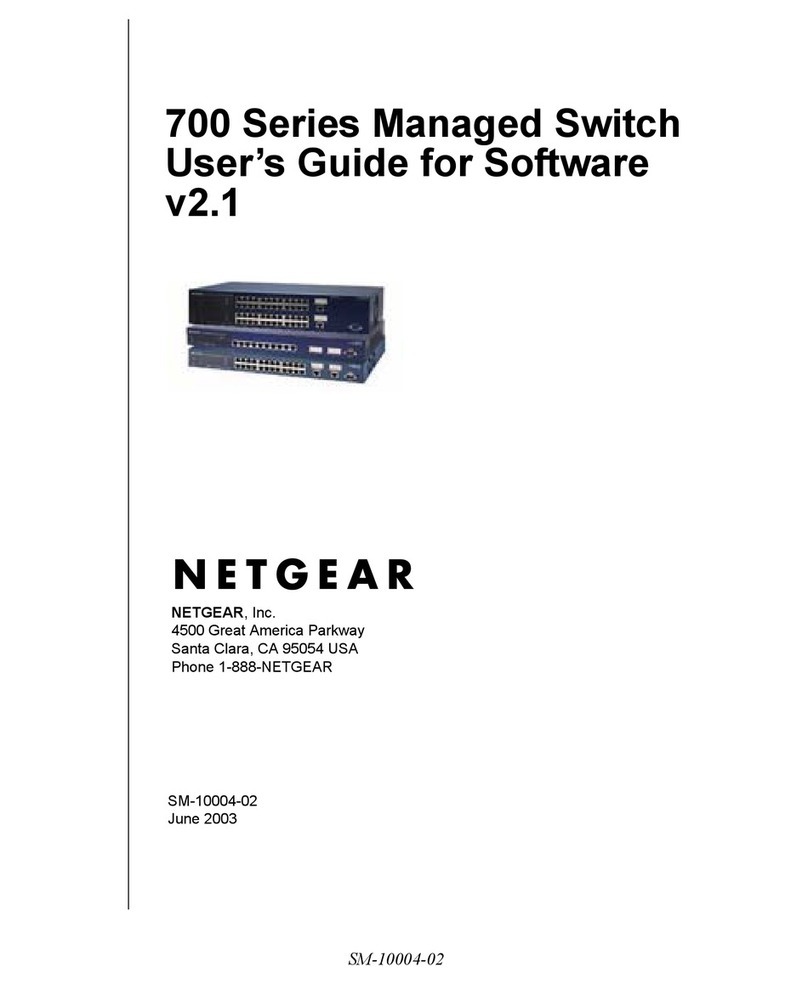H3C S9500 Series User manual

Operation Manual – MPLS L2VPN
H3C S9500 Series Routing Switches Table of Contents
i
Table of Contents
Chapter 1 MPLS L2VPN Configuration........................................................................................1-1
1.1 MPLS L2VPN Overview.....................................................................................................1-1
1.1.1 Introduction to MPLS L2VPN..................................................................................1-2
1.1.2 CCC MPLS L2VPN .................................................................................................1-4
1.1.3 SVC MPLS L2VPN..................................................................................................1-5
1.1.4 Martini MPLS L2VPN ..............................................................................................1-5
1.1.5 Kompella MPLS L2VPN..........................................................................................1-6
1.2 Configuring MPLS L2VPN.................................................................................................1-7
1.3 Configuring CCC MPLS L2VPN ........................................................................................1-7
1.3.1 Configuration Prerequisites.....................................................................................1-7
1.3.2 Configuration Procedure.........................................................................................1-8
1.4 Configuring SVC MPLS L2VPN.........................................................................................1-9
1.4.1 Configuration Prerequisites...................................................................................1-10
1.4.2 Configuration Procedure.......................................................................................1-10
1.5 Configuring Martini MPLS L2VPN ...................................................................................1-10
1.5.1 Configuration Prerequisites...................................................................................1-11
1.5.2 Configuration Procedure.......................................................................................1-11
1.6 Configuring Kompella MPLS L2VPN...............................................................................1-12
1.6.1 Configuration Prerequisites...................................................................................1-12
1.6.2 Configuration Procedure.......................................................................................1-12
1.7 Displaying and Maintaining MPLS L2VPN ......................................................................1-15
1.7.1 Displaying the Operation of MPLS L2VPN ...........................................................1-15
1.7.2 Resetting BGP L2VPN Connections.....................................................................1-16
1.8 MPLS L2VPN Configuration Example.............................................................................1-16
1.8.1 Example for Configuring a Local CCC Connection...............................................1-16
1.8.2 Example for Configuring a Remote CCC Connection...........................................1-19
1.8.3 Example for Configuring SVC MPLS L2VPN........................................................1-23
1.8.4 Example for Configuring Martini MPLS L2VPN ....................................................1-27
1.8.5 Example for Configuring Kompella MPLS L2VPN................................................1-33
1.8.6 Example for Configuring a Kompella Local Connection .......................................1-36
1.9 Troubleshooting MPLS L2VPN........................................................................................1-38

Operation Manual – MPLS L2VPN
H3C S9500 Series Routing Switches Chapter 1 MPLS L2VPN Configuration
1-1
Chapter 1 MPLS L2VPN Configuration
When configuring MPLS L2VPN, go to these sections for information you are interested
in:
zMPLS L2VPN Overview
zConfiguring MPLS L2VPN
zConfiguring CCC MPLS L2VPN
zConfiguring SVC MPLS L2VPN
zConfiguring Martini MPLS L2VPN
zConfiguring Kompella MPLS L2VPN
zDisplaying and Maintaining MPLS L2VPN
zMPLS L2VPN Configuration Example
zTroubleshooting MPLS L2VPN
Note:
zA routing switch running MPLS also performs router functions. The term "router" in
this document refers to a router in a generic sense or a Layer 3 Ethernet switch
running MPLS.
zFor the S9500 series, only the interface boards with the suffixes C, CA,or CB and
VPLS service processor cards support the MPLS function. To enable MPLS on the
S9500 series, you need to use the interface cards that support MPLS or VPLS
service processor cards. The suffix of a board can be identified through the
silkscreen on the upper right corner of the front panel of the card. For example, the
silkscreen on LSB1GP12B0 is GP12B; therefore, the suffix of the card is B.
zIn the S9500 series, the interface cards with the suffix C do not support MPLS
L2VPN.
zWhen using the S9500 series for CCC, SVC, Martini, or Kompella MPLS L2VPN,
note that the VLAN bound with the VPN at the private network access side can
contain only one port.
1.1 MPLS L2VPN Overview
This section covers these topics:
zIntroduction to MPLS L2VPN
zCCC MPLS L2VPN
zSVC MPLS L2VPN
zMartini MPLS L2VPN

Operation Manual – MPLS L2VPN
H3C S9500 Series Routing Switches Chapter 1 MPLS L2VPN Configuration
1-2
zKompella MPLS L2VPN
1.1.1 Introduction to MPLS L2VPN
I. Traditional VPN
Traditional VPNs based on asynchronous transfer mode (ATM) or frame relay (FR) are
quite popular. They share the network infrastructure of carriers. However, they have
some inherent disadvantages:
zDependence on dedicated media: To provide both ATM-based and FR-based
VPN services, carriers must establish two separate infrastructures across the
whole service scope, one ATM infrastructure and one FR infrastructure.
Apparently, the cost is very high and the infrastructures are not utilized efficiently.
zComplicated deployment: To add a siteto an existing VPN, you have to modify the
configurations of all edge nodes connected with the VPN site.
MPLS L2VPN is developed as a solution to address the above disadvantages.
II. MPLS L2VPN
MPLS L2VPN provides Layer 2 VPN services on the MPLS network. It allows carriers
to establish L2VPNs on different data link layer protocols. In addition, the MPLS
network provides traditional IP, MPLS L3VPN, traffic engineering (TE), and QoS
services.
MPLS L2VPN transfers Layer 2 user data transparently on the MPLS network. For
users, the MPLS network is a Layer 2 switched network and can be used to establish
Layer 2 connections between nodes.
As shown in Figure 1-1, customer edge devices (CEs) on different networks are
interconnected through an MPLS network.
VPN 1
CE 1 CE 2
VPN 1
VPN 2
VPN 2
CE3 CE 4
PE 1 PE 3
P
PE 2
LSP
VC
VC
VC
VC
Figure 1-1 Network diagram for MPLS L2VPN

Operation Manual – MPLS L2VPN
H3C S9500 Series Routing Switches Chapter 1 MPLS L2VPN Configuration
1-3
III. Comparison with MPLS L3VPN
Compared with MPLS L3VPN, MPLS L2VPN has the following advantages:
zHigh scalability: MPLS L2VPN establishes only Layer 2 connections. It does not
involve the routing information of users. This greatly reduces the load of the PEs
and even the load of the whole service provider network, enabling carriers to
support more VPNs and to service more users.
zGuaranteed reliability and private routing information security: As no routing
information of users is involved, MPLS L2VPN neither tries to obtain nor
processes the routing information of users, guaranteeing the security of the user
VPN routing information.
zSupport for multiple network layer protocols, such as IP, IPX, and SNA.
IV. Basic concepts of MPLS L2VPN
In MPLS L2VPN, the concepts and principles of CE, PE and Pare the same as those in
MPLS L3VPN:
zCustomer edge device (CE): A CE resides on a customer network and has one or
more interfaces directly connected with service provider networks. It can be a
router, a switch, or a host. It cannot "sense" the existence of any VPN, neither
does it need to support MPLS.
zProvider edge device (PE): A PE resides on a service provider network and
directly connects one or more CEs to the network. On an MPLS network, all VPN
processing occurs on the PEs.
zProvider (P) device: A P device is a backbone device on a service provider
network. It is not directly connected with any CE. It only needs to beequipped with
basic MPLS forwarding capabilities.
MPLS L2VPN uses label stacks to implement the transparent transmission of user
packets in the MPLS network.
zOuter label, also called tunnel label, is used to transfer packets from one PE to
another.
zInner label, also called VC label, is used to identify different connections between
VPNs.
zUpon receiving packets, a PE determines to which CE the packets are to be
forwarded according to the VC labels.
Figure 1-2 illustrates how the label stack changes in the MPLS L2VPN forwarding
process.

Operation Manual – MPLS L2VPN
H3C S9500 Series Routing Switches Chapter 1 MPLS L2VPN Configuration
1-4
L2PDU
L2PDUVT L2PDUVT`
L2PDU
CE1
PE 1
CE 2
PE 2
P
1) L2 PDU: Layer 2 protocol data unit
2) T represents tunnel label. V represents VC label. T’ represents swapped tunnel label.
Figure 1-2 MPLS L2VPN label stack processing
V. Implementation of MPLS L2VPN
Currently, there is no official standard for MPLS L2VPN. The provider-provisioned
virtual private network (PPVPN) working group of the IETF has drafted several
framework protocols. Two of the most important ones are Martini draft and Kompella
draft:
zdraft-martini-l2circuit-trans-mpls
zdraft-kompella-ppvpn-l2vpn
The Martini draft defines a method for establishing PPP links to implement MPLS
L2VPN. It uses label distribution protocol (LDP) as a signaling protocol to transfer VC
labels.
The Kompella draft defines a CE-to-CE mode for implementing MPLS L2VPN on the
MPLS network. It uses extended BGP as the signaling protocol to advertise Layer 2
reachability information and VC labels.
In addition, MPLS L2VPN can also be implemented by configuring VC labels statically.
CCC and SVC are two of the static implementation methods.
The following sections describe the characteristics of these implementation methods
for MPLS L2VPN.
1.1.2 CCC MPLS L2VPN
Unlike common MPLS L2VPN, circuit cross connect (CCC) employs just one level of
label to transfer user data. Therefore, it uses label switched paths (LSPs) exclusively.
That is, a CCC LSP can be used to transfer only the data of the CCC connection; it can
neither be used for other MPLS L2VPN connections, nor for MPLS L3VPN or common
IP packets.

Operation Manual – MPLS L2VPN
H3C S9500 Series Routing Switches Chapter 1 MPLS L2VPN Configuration
1-5
The most significant advantage of this method is that no label signaling is required for
transferring Layer 2 VPN information. As long as MPLS forwarding is supported and
service provider networks are interconnected, this method works perfectly. In addition,
since LSPs are dedicated, this method supports QoS services.
There are two types of CCC connections:
zLocal connection: A local connection is established between two local CEs that
are connected to the same PE. The PE functions like a Layer 2 switch and can
directly switch packets between the CEs without any static LSP.
zRemote connection: A remote connection is established between a local CE and a
remote CE, which are connected to different PEs. In this case, a static LSP is
required to transport packets from one PE to another.
Note:
You must configure for each remote CCC connection two LSPs, one for inbound and
the other for outbound, on the P device along the remote connection.
1.1.3 SVC MPLS L2VPN
Static virtual circuit (SVC) also implements MPLS L2VPN by static configuration. It
transfers L2VPN information without using any signaling protocol.
The SVC method resembles the Martini method closely but does not use LDP to
transfer Layer 2 VC and link information. You only need to configure VC label
information. As a matter of fact, the SVC method is the static version of the Martini
method.
Note:
The labels for CCC and SVC range from 16 to 1023, which are reserved for static LSPs.
1.1.4 Martini MPLS L2VPN
The key of the Martini method is to set up VCs between CEs.
Martini MPLS L2VPN employs VC type and VC ID to identify a VC. The VC type
indicates the encapsulation type of the VC. The VC ID uniquely identifies the VC among
the VCs of the same VC type on a PE.
The PEs connecting the two CEs of a VC exchange VC labels through LDP, and bind
their respective CE by the VC ID.

Operation Manual – MPLS L2VPN
H3C S9500 Series Routing Switches Chapter 1 MPLS L2VPN Configuration
1-6
Once LDP establishes an LSP between the two PEs and the label exchange and the
binding to CE are finished, a VC is set up and ready to transfer Layer 2 data.
To allow the exchange of VC labels between PEs, the Martini method extended LDPby
adding the forwarding equivalence class (FEC) type of VC FEC. Moreover, as the two
PEs exchanging VC labels may not be connected directly, a remote LDP session must
be set up to transfer the VC FEC and VC labels.
With Martini MPLS L2VPN, only PEs need to maintain a small amount of VC labels and
LSP mappings and no P device contains Layer 2 VPN information. Therefore, it has
high scalability. In addition, to add a new VC, you only need to configure a one-way VC
for each of the PEs. Your configuration will not affect the operation of the network.
The Martini method applies to scenarios with sparse Layer 2 connections, such as a
scenario with a start topology.
1.1.5 Kompella MPLS L2VPN
Kompella MPLS L2VPN is different from Martini MPLS L2VPN in that it does not
operate on the connections between CEs directly. It organizes different VPNs in the
whole service provider networkand encodes each CE in a VPN. For a connection to be
established between two CEs, you only need to perform these tasks on the PEs:
zConfiguring CE IDs of the local and remote CEs respectively
zSpecifying the circuit ID that the local CE assigns to the connection, such as the
VPI/VCI with ATM.
Kompella MPLS L2VPN uses extended BGP as the signaling protocol to distribute VC
labels. Its label block mode allows it to assign labels to multiple connections at a time.
With Kompella MPLS L2VPN, you can specify a local CE range to indicate how many
CEs can be connected with a CE. Then, the system assigns a label block of a size
equal to the CE range for the CE. In this way, you can reserve some labels for the VPN
for future use. This wastes some label resources in a short term, but can reduce the
VPN deployment and configuration workload in the case of expansion.
Imagine that an enterprise VPN contains 10 CEs and the number may increase to 20 in
future service expansion. In this case, you can set the CE range of each CE to 20. Thus,
when you need to add a CE to the VPN later, you only need to modify the configurations
of the PE to which the new CE is connected. No change is required for the other PEs.
This makes VPN expansion extremely simple.
Similar to MPLS L3VPN, Kompella MPLS L2VPN also uses VPN targets to identify
VPNs. This brings excellent VPN networking flexibility.
In addition, Kompella MPLS L2VPN supports local connections and inter-provider VPN
solutions.

Operation Manual – MPLS L2VPN
H3C S9500 Series Routing Switches Chapter 1 MPLS L2VPN Configuration
1-7
1.2 Configuring MPLS L2VPN
You can select any of the implementation methods for MPLS L2VPN as needed.
However, no matter what method you select, you must complete these two tasks:
zConfiguring MPLS basic capability
zEnabling MPLS L2VPN on the PE device
Follow these steps to complete the above two tasks:
To do… Use the command… Remarks
Enter system view system-view —
Configure the LSR ID mpls lsr-id Required
Configure MPLS basic capability
and enter MPLS view mpls Required
Return to system view quit —
Enable MPLS L2VPN mpls l2vpn Required
1.3 Configuring CCC MPLS L2VPN
Before configuring a CCC connection, you need to configure the interface connected to
the CE, namely the CE interface. For VLAN access, however, you do not need to
configure any VC.
1.3.1 Configuration Prerequisites
Before configuring CCC L2VPN, complete these tasks:
zConfiguring IGP on the PEs and P devices to guarantee the IP connectivity of the
MPLS backbone.
zConfiguring MPLS basic capability for the MPLS backbone on the PEs and P
devices.
zEnabling MPLS L2VPN on PEs of the MPLS backbone. You do not need to enable
MPLS L2VPN on the P devices.
Note:
A local CCC connection involves no PE and therefore requires no IGP.
To configure CCC MPLS L2VPN, you need the following data:
zName for the CCC connection
zConnection type: local or remote

Operation Manual – MPLS L2VPN
H3C S9500 Series Routing Switches Chapter 1 MPLS L2VPN Configuration
1-8
zFor a local CCC connection: the types and numbers of the incoming and outgoing
interfaces
zFor a remote CCC connection: the type and number of the incoming interface, the
address of the next hop or the type and number of the outgoing interface, and the
incoming and outgoing labels of the LSRs along the CCC connection
Note:
When configuring a remote connection, if the outgoing interface is a VLAN interface,
you need to specify the IP address of the next hop. If not, you need to specify the
outgoing interface.
1.3.2 Configuration Procedure
I. Configuring the local CCC connection
Follow these steps to create a local CCC connection on a PE:
To do… Use the command… Remarks
Enter system view system-view —
Create a local CCC
connection between
two CEs connected to
the same PE
ccc ccc-connection-name
interface interface-type
interface-number
out-interface interface-type
interface-number
Required
II. Configuring the remote CCC connection
1) Configure the PEs
Follow these steps to configure a PE:
To do… Use the command… Remarks
Enter system view system-view —
Create a remote CCC
connection between
CEs connected to
different PEs
ccc ccc-connection-name interface
interface-type interface-number in-label
in-label-value out-label out-label-value
{ nexthop ip-address | out-interface
interface-type interface-number }
Required

Operation Manual – MPLS L2VPN
H3C S9500 Series Routing Switches Chapter 1 MPLS L2VPN Configuration
1-9
Caution:
You do not need to configure two static LSPs for each remote CCC connection. Instead,
you only need to configure the incoming and outgoing labels, where the incoming label
must be exclusively for the CCC connection. The labels function as static LSPs.
2) Configure the P devices
Follow these steps to configure a P device:
To do… Use the command… Remarks
Enter system view system-view —
Enable MPLS L2VPN mpls l2vpn Required
Configure a transit static
LSP
static-lsp transit lsp-name
incoming-interface interface-type
interface-number in-label in-label
{ nexthop next-hop-addr |
outgoing-interface interface-type
interface-number } out-label out-label
Required
Caution:
zWith CCC, no static LSPs are required on the PEs but dedicated bidirectional static
LSPs are required on all the P devices between the PEs for transmitting the data of
the CCC connection.
zFor static LSP configuration commands, refer to MPLS Basics Commands in MPLS
VPN Volume.
zDo not enable VLL and MPLS on a VLAN interface of the device at the same time
because doing so will cause the MPLS L2VPN and MPLS services to malfunction at
the same time. You will have to cancel the configurations of these two services to
restore normal operation.
1.4 Configuring SVC MPLS L2VPN
SVC MPLS L2VPN does not use any signaling protocol to transfer L2VPN information.
Instead, it uses tunnels to transport data between PEs. By default, LDP LSP tunnels
are used.

Operation Manual – MPLS L2VPN
H3C S9500 Series Routing Switches Chapter 1 MPLS L2VPN Configuration
1-10
1.4.1 Configuration Prerequisites
Before configuring SVC MPLS L2VPN, complete these tasks:
zConfiguring IGP on the PEs and P devices to guarantee the IP connectivity of the
MPLS backbone
zConfiguring MPLS basic capability and enabling MPLS L2VPN on the PEs
zEstablishing the tunnels between PEs according to the tunneling policy.
To configure SVC MPLS L2VPN, you need the following data:
zTypes and numbers of the interfaces connecting the CEs
zDestination LSR ID of SVC
zIncoming and outgoing labels of the L2VPN connection
zSVC tunneling policy
1.4.2 Configuration Procedure
Follow these steps to configure SVC MPLS L2VPN on the PE:
To do… Use the command… Remarks
Enter system view system-view —
Enter interface view for the
VLAN virtual interface
connecting the CE interface interface-type interface-number —
Create an SVC MPLS
L2VPN connection
mpls static-l2vc destination
destination-router-id transmit-vpn-label
transmit-label-value receive-vpn-label
receive-label-value [ tunnel-policy
tunnel-policy-name ]
Required
Caution:
zFor SVC L2VPN, you need to ensure the validity of the incoming and outgoing
labels.
zDo not enable VLL and MPLS on a VLAN interface of the device at the same time
because doing so will cause the MPLS L2VPN and MPLS services to malfunction at
the same time. You will have to cancel the configurations of these two services to
restore normal operation.
1.5 Configuring Martini MPLS L2VPN
Martini MPLS L2VPN uses extended LDP to transfer Layer 2 information and VC
labels.

Operation Manual – MPLS L2VPN
H3C S9500 Series Routing Switches Chapter 1 MPLS L2VPN Configuration
1-11
1.5.1 Configuration Prerequisites
Before configuring Martini MPLS L2VPN, complete these tasks:
zConfiguring IGP on the PEs and P devices to guarantee the IP connectivity of the
MPLS backbone
zConfiguring MPLS basic capability and MPLS LDP for the MPLS backbone on the
PEs and P devices to establish LDP LSPs
zEnabling MPLS L2VPN on the PEs
zEstablishing remote LDP sessions between PEs
To configure Martini MPLS L2VPN, you need the following data:
zTypes and numbers of the interfaces connecting the CEs
zL2VC destination address and VC ID
zTunneling policy
1.5.2 Configuration Procedure
Follow these steps to configure Martini MPLS L2VPN on the PE:
To do… Use the command… Remarks
Enter system view system-view —
Enter interface view for the
VLAN virtual interface
connecting the CE
interface interface-type
interface-number —
Create a Martini MPLS
L2VPN connection mpls l2vc destination vcid
[ tunnel-policy tunnel-policy-name ] Required
Return to system view quit —
mpls ldp remote-peer
remote-peer-name Required
Configure the remote peer remote-ip ip-address Required
Note:
For remote peer configuration information, refer to MPLS Basics Configuration in
MPLS VPN Volume.

Operation Manual – MPLS L2VPN
H3C S9500 Series Routing Switches Chapter 1 MPLS L2VPN Configuration
1-12
Caution:
zFor an LDP connection, there are two main parameters: one is the IP address of the
peer PE, the other is the VC ID. The combination of the VC ID and the encapsulation
type must be unique on a PE.
zFor Martini MPLS L2VPN, a VC ID of the same encapsulation type must be unique.
Changing the encapsulation type may result in VC ID conflicts.
zFor Martini MPLS L2VPN, an access interface can only be connected with an
access interface, a trunk/hybrid interface can only be connected with a trunk/hybrid
interface.
zDo not enable VLL and MPLS on a VLAN interface of the device at the same time
because doing so will cause the MPLS L2VPN and MPLS services to malfunction at
the same time. You will have to cancel the configurations of these two services to
restore normal operation.
1.6 Configuring Kompella MPLS L2VPN
Kompella MPLS L2VPN uses extended BGP as the signaling protocol to transfer
L2VPN information between PEs.
To create a Kompella local connection, you only need to configure the VPN and CE
connection on the PE. Neither IGP nor BGP L2VPN capability is required.
1.6.1 Configuration Prerequisites
Before configuring Kompella MPLS L2VPN, complete these tasks:
zConfiguring IGP on the PEs and P devices to guarantee the IP connectivity of the
MPLS backbone
zConfiguring MPLS basic capability and enabling MPLS L2VPN on the PEs
zConfiguring MPLS LDP for the MPLS backbone on the PEs and P devices to
establish LDP LSPs
To configure Kompella MPLS L2VPN, you need the following data:
zAS numbers of the local PE and the peer PE
zName, RD, and VPN-target attributes of the L2VPN connection
zCE name, CE ID, and CE range
zCE offset
1.6.2 Configuration Procedure
I. Configuring BGP L2VPN capability
Follow these steps to configure BGP L2VPN capability:

Operation Manual – MPLS L2VPN
H3C S9500 Series Routing Switches Chapter 1 MPLS L2VPN Configuration
1-13
To do… Use the command… Remarks
Enter system view system-view —
Enter BGP view bgp as-number —
Establish the peer
relationship with the peer PE peer {group-name |ip-address }
as-number as-number Required
Specify the interface for the
TCP connection
peer {group-name |ip-address }
connect-interface interface-type
interface-number Required
Enter BGP L2VPN address
family view l2vpn-family —
Enable the filtering by the
VPN target extended
community attributes for the
received routing information
policy vpn-target Optional
Enabled by
default
Enable the specified peer or
peers to exchange BGP
routing information of the
BGP-L2VPN address family
peer {group-name |ip-address }
enable Required
II. Configuring VPN
Follow these steps to configure VPN:
To do… Use the command… Remarks
Enter system view system-view —
Create a VPN and enter
MPLS L2VPN view mpls l2vpn vpn-name
[ encapsulation {ethernet |vlan }]Required
Configure an RD for the
L2VPN route-distinguisher
route-distinguisher Required
Configure VPN-targets vpn-target vpn-target &<1-16>
[both |export-extcommunity |
import-extcommunity ] Required
Set the Layer 2 MTU for
the VPN mtu mtu Optional

Operation Manual – MPLS L2VPN
H3C S9500 Series Routing Switches Chapter 1 MPLS L2VPN Configuration
1-14
Caution:
zThe mtu command is not recommended. It affects only parameter negotiation,
which may occur; it does not affect data forwarding.
zWith Kompella MPLS L2VPN, you must create on the PE an L2VPN instance for
each VPN where a directly connected CE resides. When creating an L2VPN, you
must specify an encapsulation type matching that of the CE interface.
zThe configuration of the VPN targets andRD are the same as that for MPLS L3VPN.
For Kompella MPLS L2VPN, the RD is required. Once configured, an RD cannot be
changed, unless you delete the L2VPN instance and then re-create it.
III. Creating a CE Connection
Follow these steps to create a CE connection:
To do… Use the command… Remarks
Enter system view system-view —
Create a VPN and enter
MPLS L2VPN view mpls l2vpn vpn-name
[ encapsulation {ethernet |vlan } ] Required
Create a CE for a VPN
and enter MPLS L2VPN
CE view
ce ce-name [ id ce-id [ range
ce-range ] [ default-offset
ce-offset ] ] Required
Create a Kompella
connection
connection [ ce-offset id ] interface
interface-type interface-number
[ tunnel-policy tunnel-policy-name ]Required
Caution:
Do not enable VLL and MPLS on a VLAN interface of the device at the same time
because doing so will cause the MPLS L2VPNand MPLS services to malfunction at the
same time. You will have to cancel the configurations of these two services to restore
normal operation.
CE ID is used for identifying a CE uniquely in a VPN. To facilitate the configuration, it is
recommended to encode the CE IDs in continuous natural numbers starting from 1.
The CE range of a CE indicates the maximum number of CEs that the CE can connect
with. You can configure a CE range greater than what is required based on your
estimate of the future VPN expansion if the label resources are abundant (they are

Operation Manual – MPLS L2VPN
H3C S9500 Series Routing Switches Chapter 1 MPLS L2VPN Configuration
1-15
usually abundant). This can reduce the configuration modification required when CEs
are added in the VPN in future.
When you create a CE connection, if you set the default offset value to 1:
zThe CE offset defaults to 1 for the first connection of the CE.
zThe CE offset is that of the former connection plus 1 for any connection of the CE
other than the first one.
zWhen planning a VPN, you are recommended to encode CE IDs in incremental
sequence starting from 1. When configuring connections, you are recommended
to adopt the sequence of the CE IDs, in which case you can omit the ce-offset
portion from most of the required commands. This simplifies the configuration.
Note:
You can only increase the CE range. For example, if the original CE range is 10, you
can increase it to 20, but cannot reduce it to 5. The only way to reduce the CE range is
to delete the CE and re-create it.
When you increase the CE range, for example, from 10 to 20, the system does not
release the original label block and then re-apply for a new label block of the size of 20.
Instead, the system applies for a supplementary label block of the size of 10. This
ensures that the existing services will not be interrupted.
1.7 Displaying and Maintaining MPLS L2VPN
1.7.1 Displaying the Operation of MPLS L2VPN
To do… Use the command… Remarks
Display information about
CCC connections
display ccc [ ccc-name
ccc-name | type { local |
remote } ]
Available in any
view
Display information about
the interfaces used by the
CCC connection
display l2vpn ccc-interface
vc-type { all | bgp-vc | ccc |
ldp-vc | static-vc } [ up | down ]
Available in any
view
Display information about
SVC L2VPN connections
display mpls static-l2vc
[ interface interface-type
interface-number ]
Available in any
view
Display information about
Martini MPLS L2VPN
connections
display mpls l2vc[ interface
interface-type interface-number|
remote-info]
Available in any
view

Operation Manual – MPLS L2VPN
H3C S9500 Series Routing Switches Chapter 1 MPLS L2VPN Configuration
1-16
To do… Use the command… Remarks
Display information about
Kompella MPLS L2VPN
connections
display mpls l2vpn connection
[ vpn-name vpn-name
[ remote-ce ce-id | down | up |
verbose ] | summary | interface
interface-type interface-number ]
Available in any
view
Display the BGP routing
information about
Kompella L2VPN
display bgp l2vpn { all | group
[ group-name ] |
route-distinguisher rd [ ce-id
ce-id [ label-offset
label-offset ] ] }
Available in any
view
Display the BGP peer
information of Kompella
MPLS L2VPN
display bgp l2vpn peer
[ ip-address | verbose ] Available in any
view
Display the MPLS L2VPN
information about PEs
display mpls l2vpn [ vpn-name
vpn-name [ local-ce |
remote-ce ] ]
Available in any
view
Display the Route-Target
list of MPLS L2VPN
display mpls l2vpn
[ export-route-target-list |
import-route-target-list ]
Available in any
view
Display MPLS L2VPN
forwarding information
display mpls l2vpn
[ forwarding-info [ vc-label ]
interface interface-type
interface-number [ |{ begin |
exclude | include }
regular-expression ] ]
Available in any
view
1.7.2 Resetting BGP L2VPN Connections
To do… Use the command… Remarks
Reset BGP L2VPN
connections
reset bgp l2vpn
{ as-number | ip-address |
all | internal | external } Available in user view
1.8 MPLS L2VPN Configuration Example
1.8.1 Example for Configuring a Local CCC Connection
I. Network requirements
zThe CEs are connected with the PE through Serial interfaces. The link layer
encapsulation protocol is PPP.
zA local CCC connection is created between CE A and CE B.

Operation Manual – MPLS L2VPN
H3C S9500 Series Routing Switches Chapter 1 MPLS L2VPN Configuration
1-17
Note:
zSince a local CCC connection is bidirectional, one is enough.
zThe PE interfaces connecting the CEs require no IP addresses.
II. Network diagram
Vlan-int1
100.1.1.1/24 Vlan-int1
Vlan-int1
100.1.1.2/24
Vlan-int2
CCC local connection
CE A
CE B
PE
Loop0
172.1.1.1/32
Figure 1-3 Network diagram for configuring a local CCC connection
III. Configuration procedure
1) Configure CE A
<Sysname> system-view
[Sysname] sysname CEA
[CEA] interface Vlan-interface 1
[CEA-Vlan-interface1] ip address 100.1.1.1 24
2) Configure the PE
# Configure the LSR ID and enable MPLS globally.
<Sysname> system-view
[Sysname] sysname PE
[PE] interface loopback 0
[PE-LoopBack0] ip address 172.1.1.1 32
[PE-LoopBack0] quit
[PE] mpls lsr-id 172.1.1.1
[PE] mpls
[PE-mpls] quit
# Enable MPLS L2VPN globally.
[PE] mpls l2vpn
# Configure interface VLAN-interface 1.
[PE] interface vlan-interface 1

Operation Manual – MPLS L2VPN
H3C S9500 Series Routing Switches Chapter 1 MPLS L2VPN Configuration
1-18
[PE-Vlan-interface1] quit
# Configure interface VLAN-interface 2.
[PE] interface Vlan-interface 2
[PE-Vlan-interface2] quit
# Create a local connection between CEA and CE B.
[PE] ccc CEA-CEB interface Vlan-interface 1 out-interface Vlan-interface 2
3) Configure CE B
<Sysname> system-view
[Sysname] sysname CEB
[CEB] interface Vlan-interface 1
[CEB-Vlan-interface1] ip address 100.1.1.2 24
After completing the above configurations, you can display CCC connection
information on the PE. There should be one local CCC connection established. CE A
should be able to ping interface 100.1.1.2 of CE B and CE B should be able to ping
interface 100.1.1.1 of CE A:
# Display CCC connection information on the PE.
[PE] display ccc
Total ccc vc : 1
Local ccc vc : 1, 1 up
Remote ccc vc : 0, 0 up
***Name : cea-ceb
Type : local
State : up
Intf1 : vlan-interface 1 (up)
Intf2 : Vlan-interface 2 (up)
# On CE A, ping interface 100.1.1.2 of CE B.
[CEA] ping 100.1.1.2
PING 100.1.1.2: 56 data bytes, press CTRL_C to break
Reply from 100.1.1.2: bytes=56 Sequence=1 ttl=255 time=180 ms
Reply from 100.1.1.2: bytes=56 Sequence=2 ttl=255 time=60 ms
Reply from 100.1.1.2: bytes=56 Sequence=3 ttl=255 time=10 ms
Reply from 100.1.1.2: bytes=56 Sequence=4 ttl=255 time=70 ms
Reply from 100.1.1.2: bytes=56 Sequence=5 ttl=255 time=60 ms
--- 100.1.1.2 ping statistics ---
5 packet(s) transmitted
5 packet(s) received
0.00% packet loss
round-trip min/avg/max = 10/76/180 ms.
# On CE B, ping interface 100.1.1.1 of CE A. (Omitted)

Operation Manual – MPLS L2VPN
H3C S9500 Series Routing Switches Chapter 1 MPLS L2VPN Configuration
1-19
1.8.2 Example for Configuring a Remote CCC Connection
I. Network requirements
zThe CEs are connected to the PEs through VLAN interfaces.
zA remote CCC connection is created between CE A and CE B.
zThe MPLS backbone runs OSPF.
The main steps for configuring a CCC remote connection are:
zCreate remote CCC connections on thePEs. No static LSP is required on the PEs.
zConfigure two static LSPs on the P device for packets to be transferred in both
directions.
II. Network diagram
CE A CE B
CCC remote connection
PE A PE BP
Vlan-int2
Vlan-int1
Vlan-int2
Vlan-int1
Vlan-int1 Vlan-int2
Vlan-int1 Vlan-int1
Loop0 Loop0 Loop0
Device Interface IP address Device Interface IP address
CE A Vlan-int1 100.1.1.1/24 P Loop0 10.0.0.2/32
PE A Loop0 10.0.0.1/32 Vlan-int2 10.2.2.2/24
Vlan-int2 10.1.1.1/24 Vlan-int1 10.1.1.2/24
CE B Vlan-int1 100.1.1.2/24 PE B Loop0 10.0.0.3/32
Vlan-int1 10.2.2.1/24
Figure 1-4 Network diagram for configuring a remote CCC connection
III. Configuration procedure
1) Configure CE A.
<Sysname> system-view
[Sysname] sysname CEA
[CEA] interface Vlan-interface 1
[CEA-Vlan-interface1] ip address 100.1.1.1 24
2) Configure PE A.
# Configure the LSR ID and enable MPLS globally.
<Sysname> system-view
[Sysname] sysname PEA
[PEA] interface Loopback 0
[PEA-LoopBack0] ip address 10.0.0.1 32
[PEA-LoopBack0] quit
Other manuals for S9500 Series
73
Table of contents
Other H3C Switch manuals
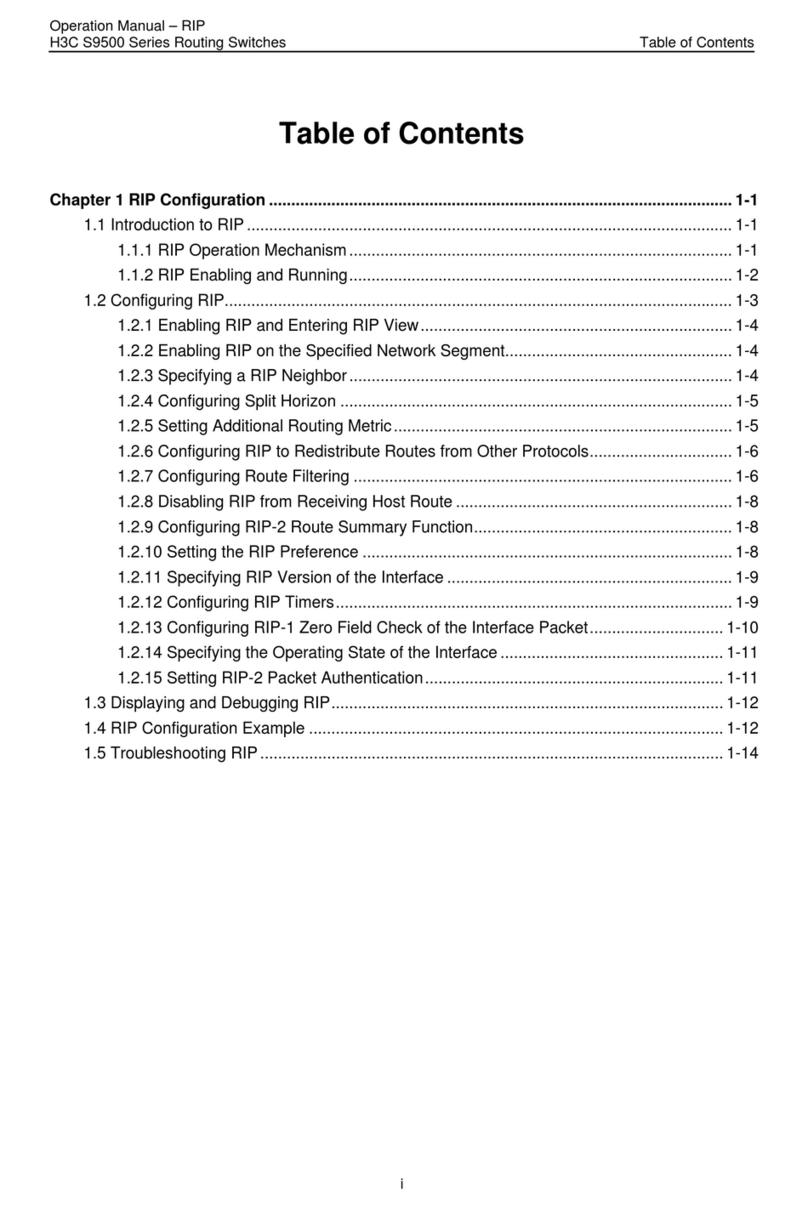
H3C
H3C S9500 Series User manual

H3C
H3C S5120-EI Series Installation manual
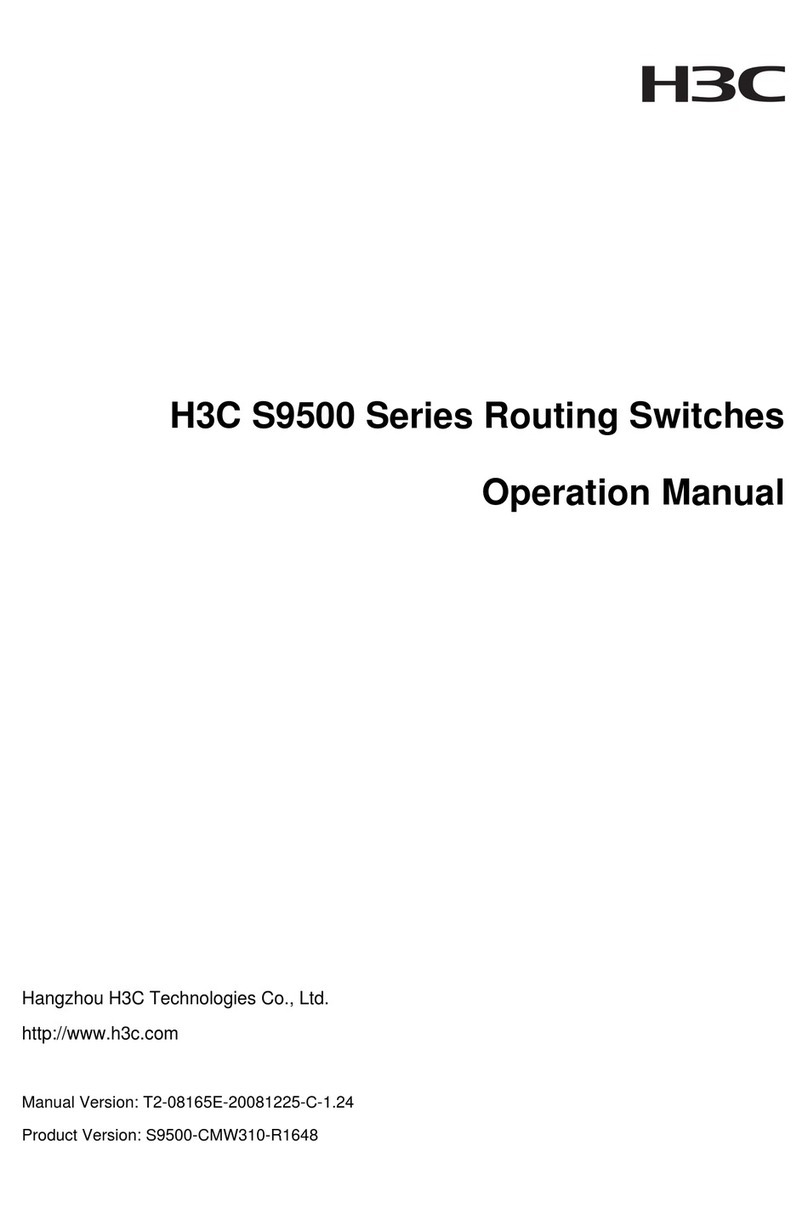
H3C
H3C S9500 Series User manual
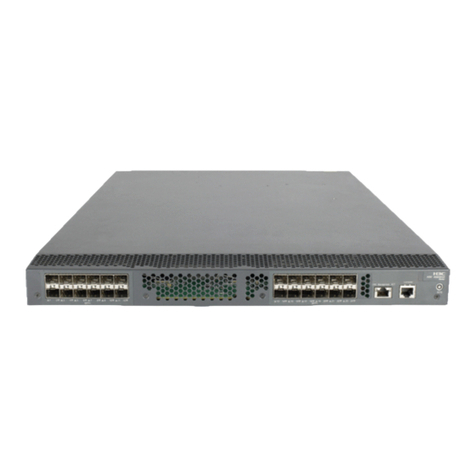
H3C
H3C S5830V2 series User manual

H3C
H3C S6800 Series User manual
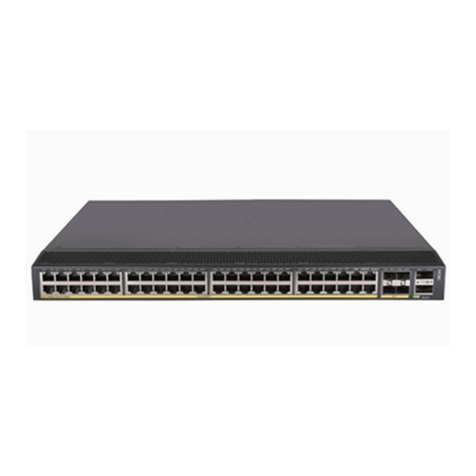
H3C
H3C S5850 Series User manual

H3C
H3C S5120-EI Series User manual

H3C
H3C S12500X-2L User manual
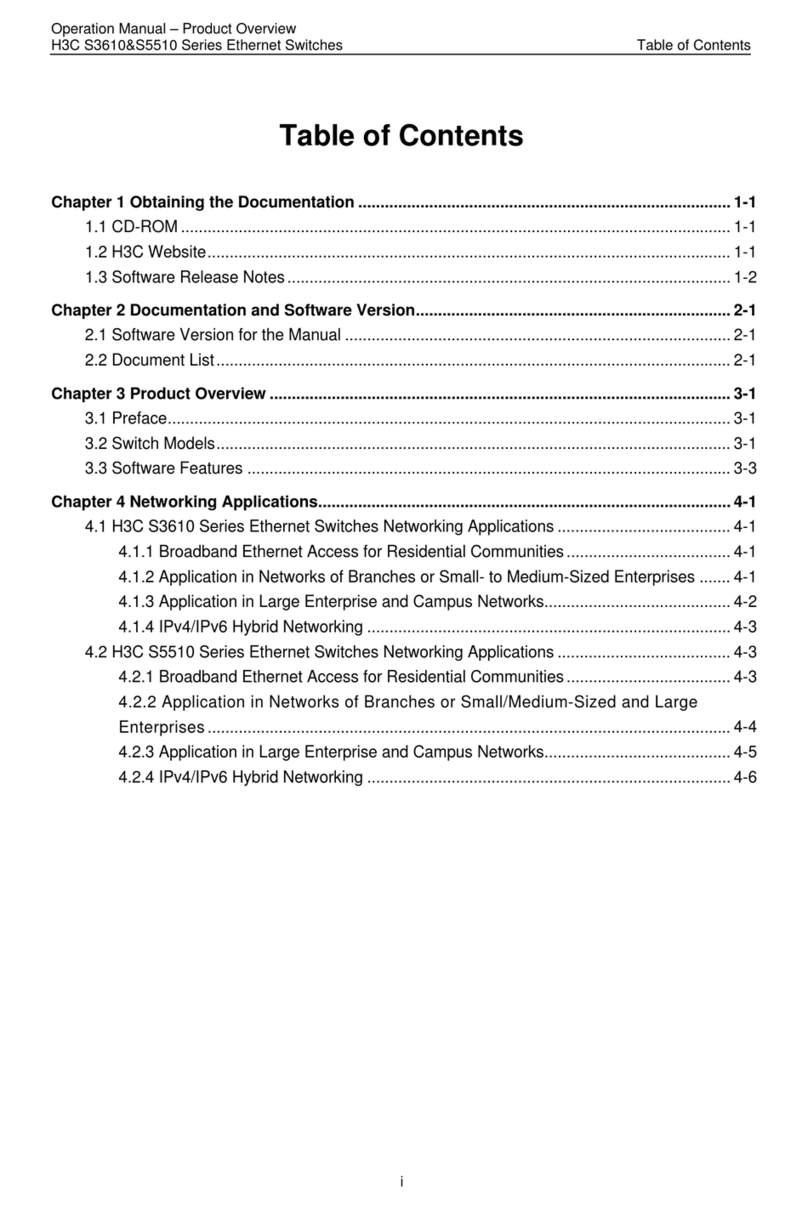
H3C
H3C S3610series User manual

H3C
H3C S10500 Series User manual
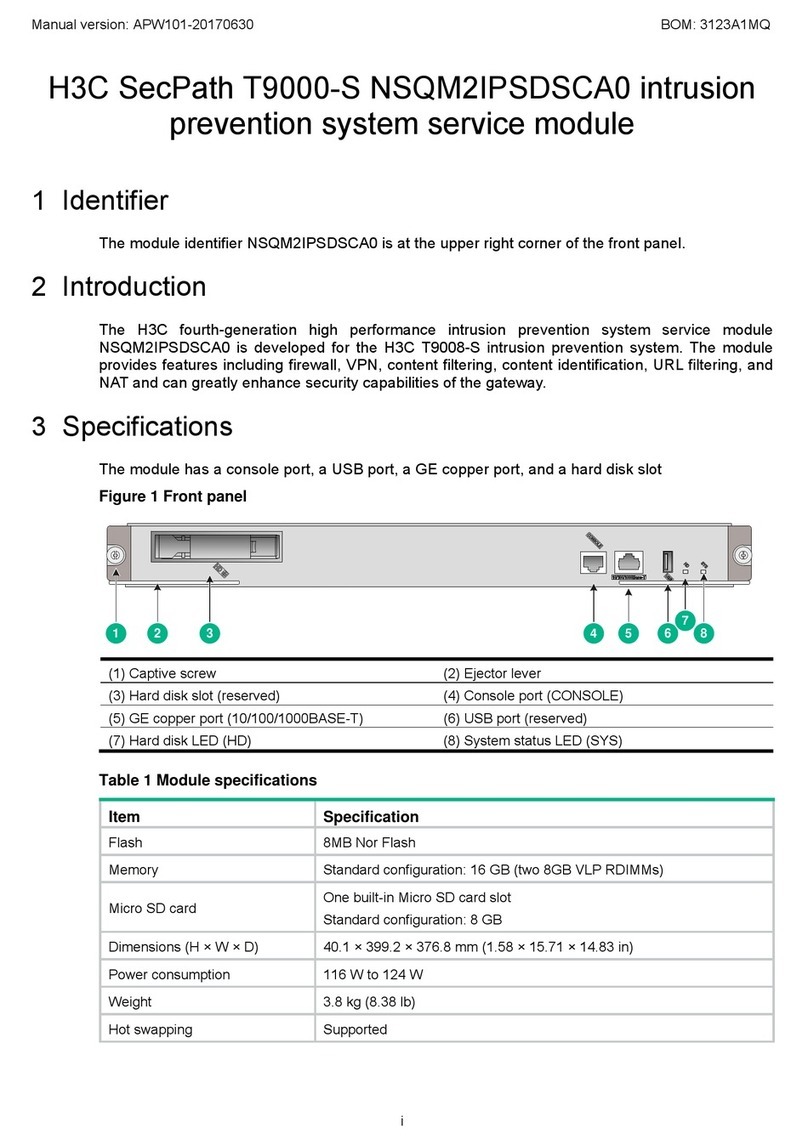
H3C
H3C SecPath T9000-S User manual

H3C
H3C S5120-EI Series User manual

H3C
H3C S9500 Series User manual

H3C
H3C S9500 Series User manual
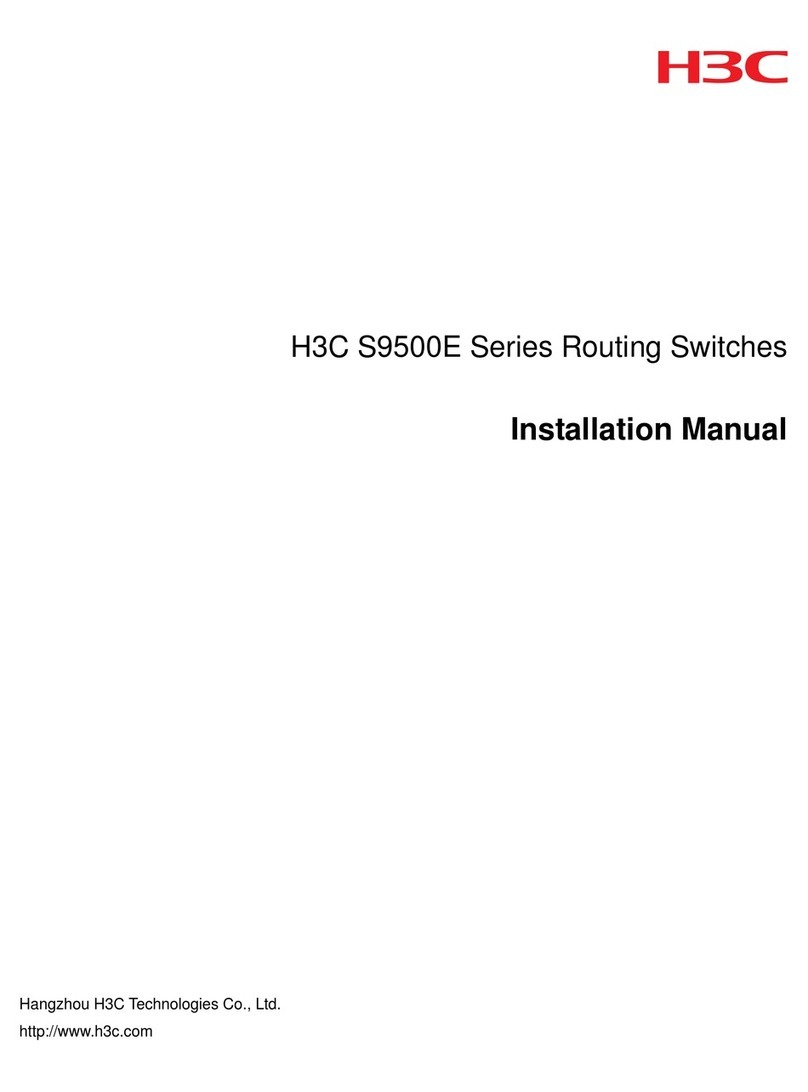
H3C
H3C S9500E Series User manual
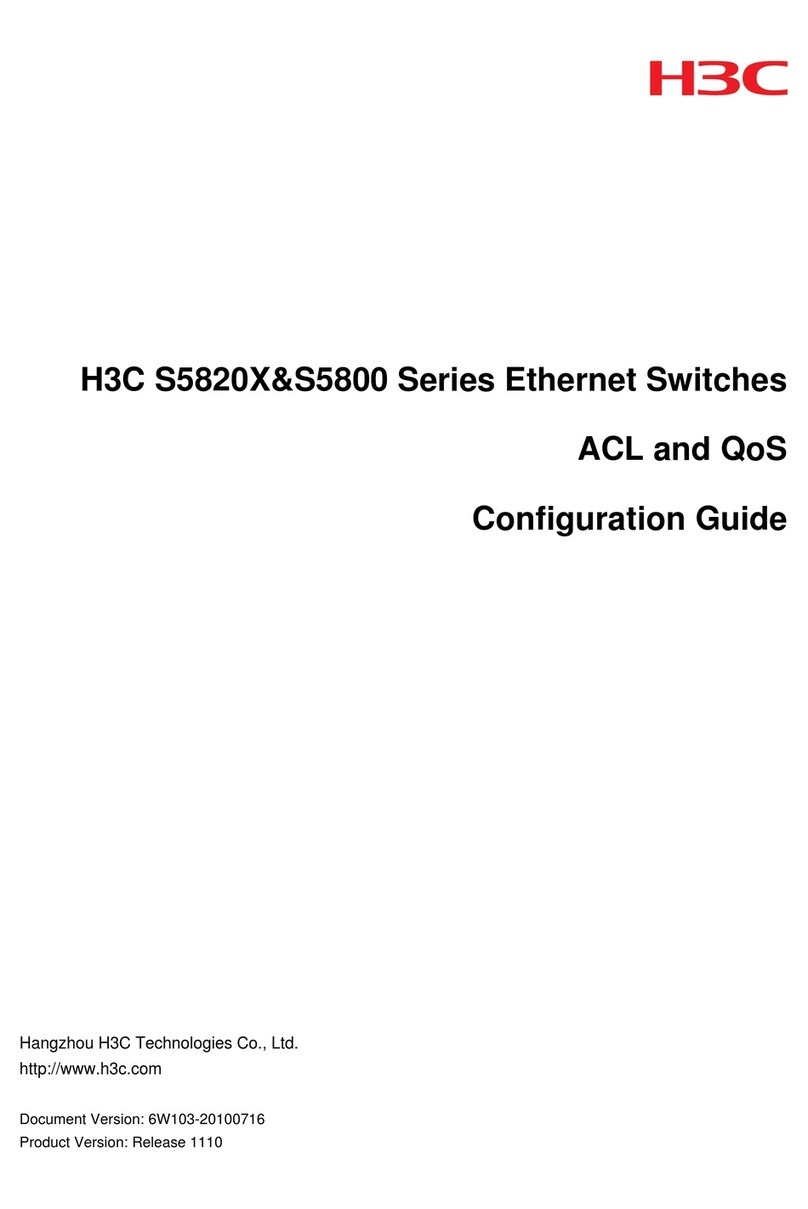
H3C
H3C s5820x series User manual

H3C
H3C S12500X-2L User manual
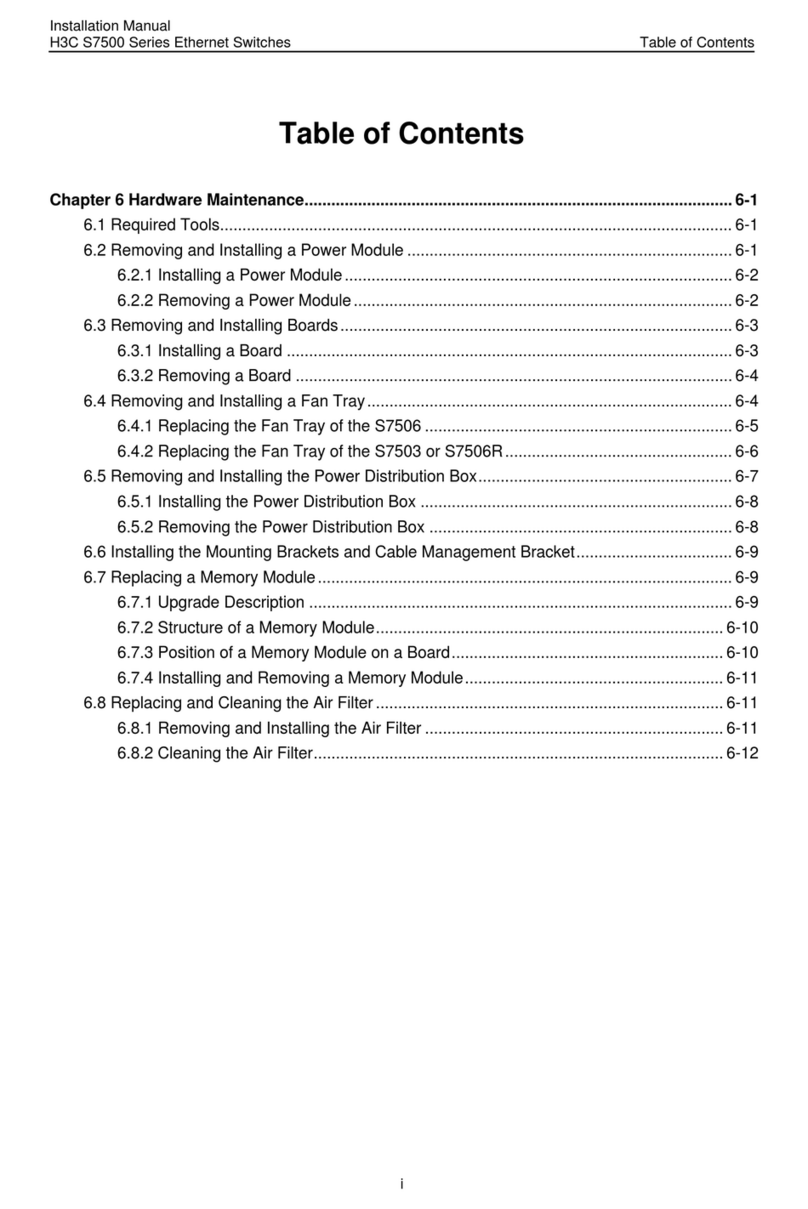
H3C
H3C S7500 Series User manual
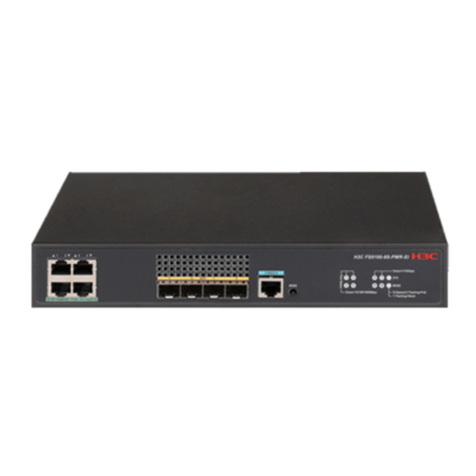
H3C
H3C E500C-F Series User manual

H3C
H3C s5820x series User manual
